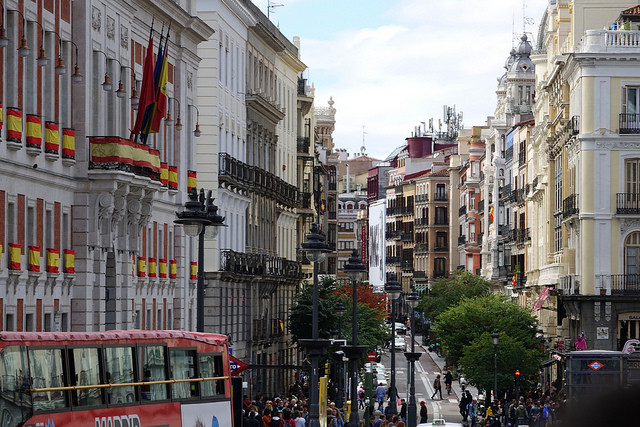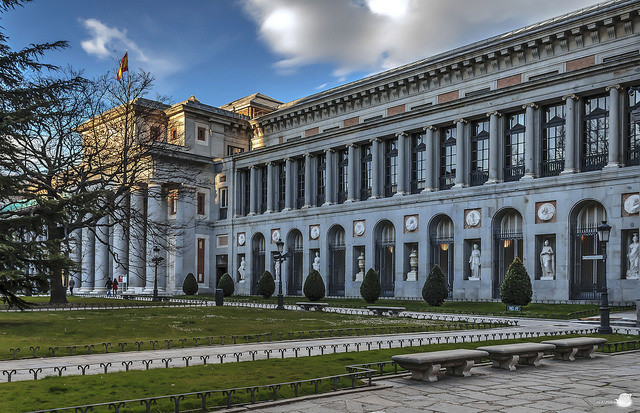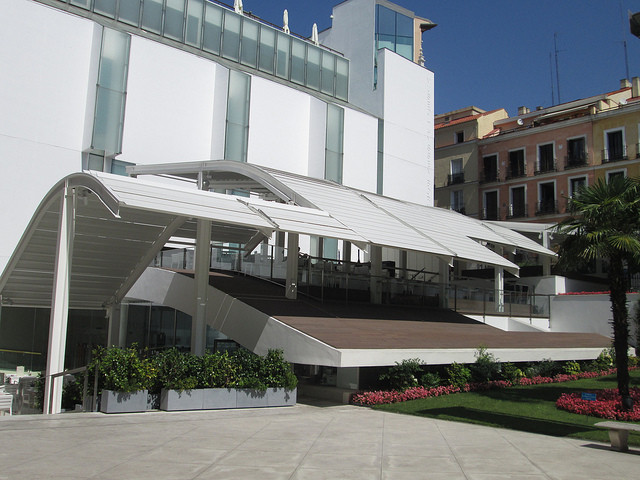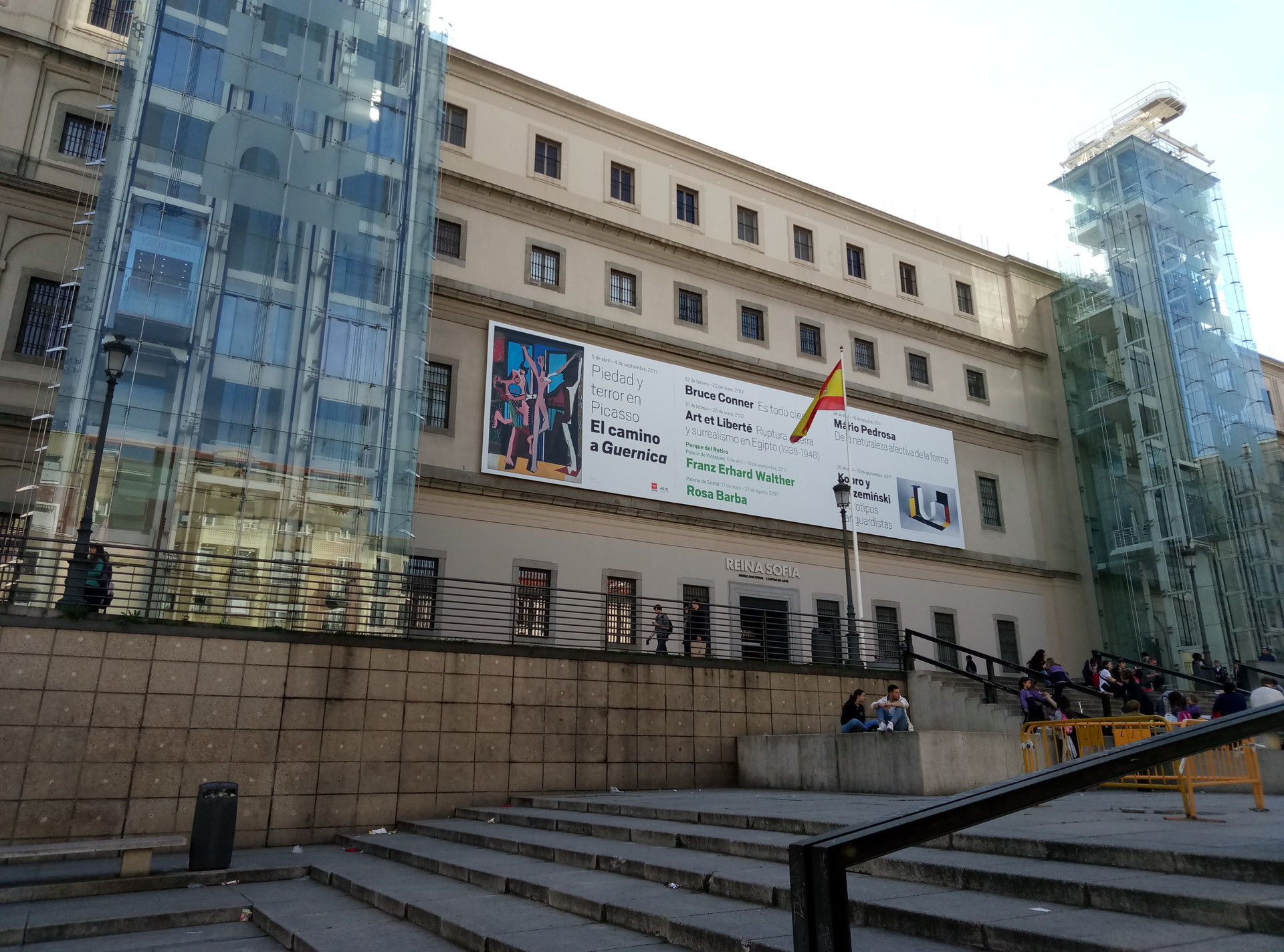The Museums Route
The Golden Triangle, also known as "Triangle of Art", is the name that is commonly given to the area of Madrid that includes the three main museums dedicated to the art of the city: the Prado Museum, the Reina Sofia Museum and the Thyssen-Bornemisza Museum. All three of these are located on the Paseo del Prado, starting with the Reina Sofía Museum, which is located just next to Atocha station. These three museums are the main tourist attractions that the city of Madrid is known for.
It is true that visiting these three museums one after the other can be really tiring, but it is something which is very common among the tourists who visit and explore the city. Take advantage of the close proximity that all of these museums have to one another and spend a day in Madrid. In addition to this, they are all right next to the Retiro Gardens, an area where there are a lot of places to eat. It's a perfect plan!

The Prado Museum
In my opinion, the route should start with the Prado Museum, which is located right next to the Retiro Park. The best metro stop to get there would be the Banco de España stop on metro line 2.
It is a museum that is mainly dedicated to works of art belonging to the Golden Age of Spanish art. This means the Spanish pieces that were created approximately during the 16th and 17th century by painters such as Velázquez or El Greco, who are probably the two best known Spanish painters of the time. The other great collection of Spanish art in the Prado Museum's permanent collection is Goya's 17th century black paintings.
However, the permanent collection not only protects Spanish works of art, but there is also a large collection of paintings belonging to Flemish and Italian schools from the 15th to the 18th centuries. Among these works, painters such as El Bosco especially stand out with one of the most famous paintings in the entire museum: The Garden of Earthly Delights . Other very famous painters that also have art protected in the museum include: Boticcelli, Rafael or van Der Weyden. The latter has another one of the most outstanding paintings in the museum, El Descendimiento, a 15th century painting which is the most surprising of the whole collection to see in person.
However, not everything is pictorial art; there is also a room in the museum that is dedicated to sculpture - all the way from classical to Renaissance sculptures. It is not a very well-known room and it's not as big as the rest of the museum, but it is interesting to come and see it.
The museum is very big; it has two floors dedicated to the permanent collection. It is not as huge as the Louvre for example, as it is possible to take a walk through the permanent collection in less than an hour without being overwhelmed. It is organised by rooms that are organised by eras and schools. It is very simple to move around the museum, it doesn't seem too heavy or chaotic at any moment in time.
Outside, there is a classic and monumental building that was built in the early 19th century. For me, it is the most beautiful building, aesthetically speaking. It is not a very tall building, but very long. There are several entrance doors into the museum, but the most beautiful part of the exterior is the main entrance where, next to the gardens, there is the famous statue by Diego de Velázquez. You must take a photo here!
Throughout the year, a part of the museum is set up for the temporary collections. The last one of these was Ingres', which I was able to attend. All the collections that are usually put on during the year are very interesting, but the best ones tend to coincide with the spring and summer months.

The Thyssen-Bornemisza Museum
This museum goes a little more unnoticed as it does not have such a monumental-looking exterior like the other two do. It is located at Paseo del Prado number 8, just above La Plaza de Neptuno and the Palace Hotel in Madrid.
It is a private collection that is publicly shown. It is a museum that has gathered works of art all the way from the Middle Ages, up to the Contemporary Ages most recently. Personally, this is the museum I like to see the most out of all three museums. In addition to the fact that the permanent collection mainly has contemporary works, which is the most striking period of time for the majority of the public, it also usually has thematic or artist-specific exhbitions that are very worth attending.
Inside the museum is quite modern, even though the building from the outside is old. It is very bright and not too big; you can see the whole thing in less than an hour walking at a normal pace, more or less.
Out of the three, this one is undoubtedly the quickest museum to see, so I think it would be best to visit it second - after the Prado Museum. In this way, you can spend the morning visiting the Prado and the Thyssen museums in order to keep the afternoon free to see the Reina Sofia, which is much bigger than the other two and has more than two floors.

The Reina Sofia Museum
The Reina Sofia should be the last one that you visit out of the three for three main reasons: it is the longest of them all, it is the furthest from the city centre and it is exclusively dedicated to contemporary works of art created during the 20th century onwards.
It is right next to Atocha station: you only have to cross the street and walk two minutes to get there. Together with the Prado, it is the most popular museum that most people go to during the year. The building's exterior stands out for its design that has very modern shapes and a glass façade, with elevators on the outside at its main entrance.
Being the most modern museum of all three, its lay-out could be a little chaotic for anyone who is not really specialised in art. The paintings are not exhibited in an orderly way, like by time-period or schools like it usually is in most art museums that you go to. In the Reina Sofia, the temporary collections are grouped in the rooms by subject, so you can find paintings from different periods, trends or parts of the world that only have the subject matter or some kind of stylistic influence in common between them. It is one of the most avant-guarde ways of understanding museums.
The museum's main works of art are by the most important Spanish avant-garde painters such as Dalí, Miró and Picasso, the latter being the artist of the most important and famous painting kept by the museum: El Guernica.
The temporary exhibitions in this museum are also very famous. Four years ago there was the most successful exhibition in the history of Spanish museums: the exhibition dedicated to Dalí. An exhibition that, for those of us who wanted to go to see it, had a huge queue due to the huge number of people from all over the world who wanted to visit it in summer.
We can also mention the spectacular museum library - a huge archive that can be publicly accessed. You can see the library from outside the building as it has windows that allow you to see the inside. It is a huge, classical-style library that, although it seems like a lie, makes you want to study.

Price
All that remains to talk about is to ask how much money it costs to visit all these museums in a single day! The answer is variable. On the one hand, it should not be forgotten that these national museums open their doors free of charge every Friday. It is undoubtedly the best option to visit museums, but I can say from experience, that during these days it can be very tiresome, due to the long queues that form at the doors of the museums. Furthermore, almost everyone takes advantage of this day to visit them, and it becomes much more uncomfortable to move around inside.
On the other hand, I must say that paying the general entrance fee for all of these museums can easily surpass 40 euros, which is not within everybody's price-range. Although, definitely in the Prado and in the Reina Sofia you can show your student card and it is possible to get in for free any day of the week.
In any case, there is a specific offer in order to be able to visit these three museums. It is a kind of voucher with which you can visit the three museums once, whenever you want, for only 28 euros. The amount you can save with this is considerable.

Photo gallery
Content available in other languages
- Español: La ruta de los museos
- Italiano: Un percorso tra i musei di Madrid
Rate and comment about this place!
Do you know The Golden Triangle? Share your opinion about this place.




















